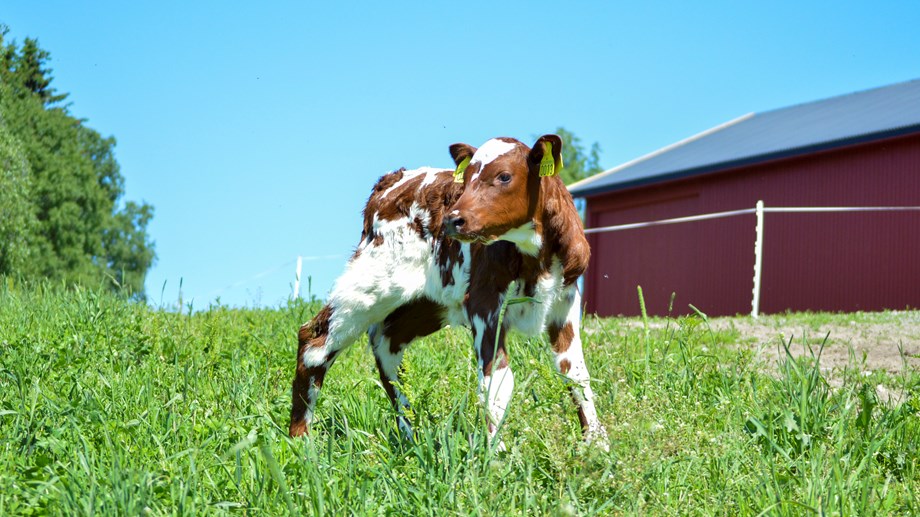Calving ease index (2.9% of TMI)
The frequency of calving difficulty in the Norwegian Red population is very low compared to other breeds. Calving ease is scored by the farmer as the difficulty of calving with 1=none, 2=some and 3=large difficulties. 93% of all calvings (all lactations) have no difficulty.
Both paternal/direct calving ease (calving ease attributed to sire of calf) and maternal calving ease (how daughters of a bull perform when they calve) are included in the calving ease index.
Rump angle is an important trait related to calving difficulties. With the move to genomic selection, maternal calving ease has a lower reliability compared
to reliability under the progeny test program. The indirect information on rump angle in TMI now adds significantly to the accuracy for selection to improve maternal calving ease.
| Trait | Relative weight (%) |
| Calving ease, direct/paternal | 20.7 |
| Calving ease, maternal | 31.0 |
| Rump angle | 48.3 |
Stillbirths Index (0.6% of TMI)
Both paternal/direct stillbirth (stillbirth attributed to sire of calf) and maternal stillbirth (stillbirth attributed to the daughters of a bull) are included in the stillbirth index.
Information about stillbirths is based on the calving information that is registered by the farmer in the Norwegian Dairy Herd Recording System.
The frequency of stillbirths in the Norwegian Red population is low, but it is still included in the breeding goal to prevent the frequency to increase.
